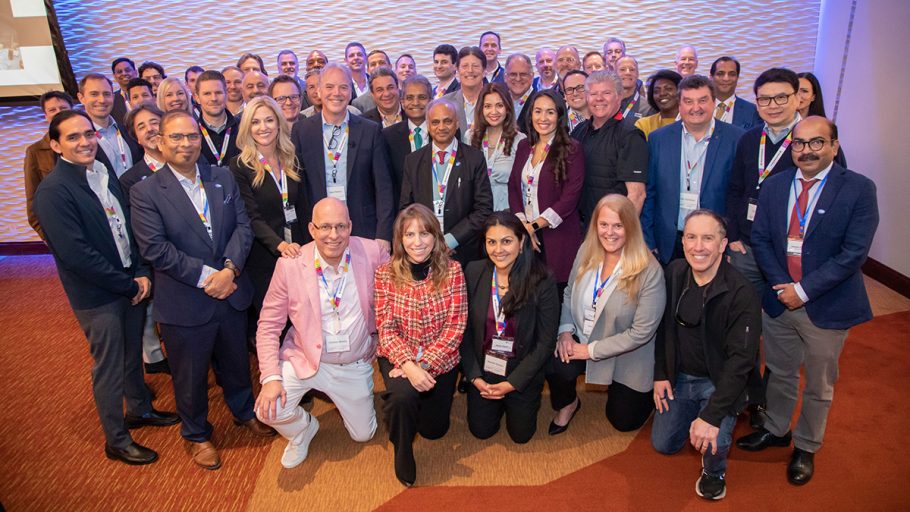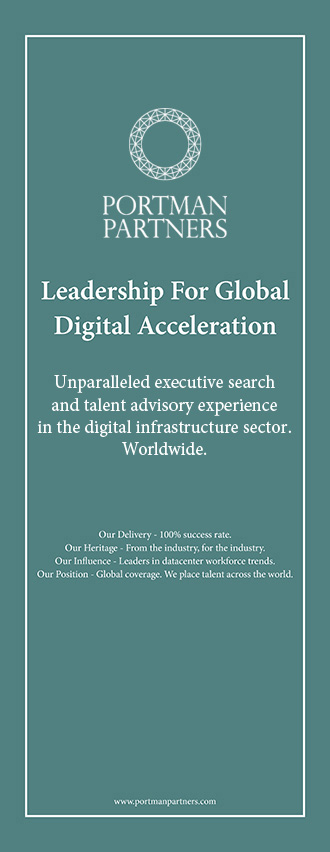I founded iMasons in 2016 to unite the people who design, construct, operate, and maintain the networks, equipment, and facilities of the digital age. Today, iMasons has over 6,000 members who collectively represent more than 200 billion USD in digital infrastructure projects across 130 countries. Digital infrastructure is a collection of data center locations that deliver digital services to people and machines. Today, it’s as important to any community as its airport, train station, waterworks, power generation, transmission lines, and substation. It enables technologies that people use every day to connect, communicate, work, and play. It’s the utility of the digital age, woven into the fabric of modern life. As chairman and founder of iMasons, I directed the development of the SOTI to provide a holistic picture of the importance of digital infrastructure and to guide strategic decisions about where, when, and how digital infrastructure is built, operated, and maintained.
The report aggregates and synthesizes information shared by more than 500 iMasons across more than 50 countries through member meetings, Advisory Council sessions, collaboration workshops with our strategic partners, and one-on-one conversations with owners of some of the largest digital infrastructure portfolios in the world. In accordance with iMasons’ values, all input to the report was anonymized except where noted. This approach allows us to provide a unique perspective about the digital infrastructure industry that’s difficult to achieve in any other forum. The report surfaces our industry’s biggest challenges to responsible and sustainable growth and provides insights into trends and conditions in established and emerging markets around the world.
Looking holistically, the report shows that the four biggest challenges to fulfilling the unprecedented global demand for digital infrastructure are:
- access to concentrated sources of clean power;
- the ability to find, train, hire, and retain people to build, operate, and maintain digital infrastructure;
- a willingness to earn a positive perception by being a good neighbor in the communities where digital infrastructure is built; and
- a steadfast focus on decarbonization of digital infrastructure to do our part to protect the planet.

Deeper conversations among iMasons spawned a potential solution to address these challenges around power, people, perception, and the planet simultaneously: clean energy zones. Clean energy zones are master-planned towns or city-size areas developed around concentrated sources of clean energy to serve multiple industries, including multi-tenant data center complexes. Complementary power-intensive industries could colocate in these zones and seed communities filled with skilled people resources. The zones could also help scale next-generation materials, such as green concrete and clean energy technologies like sustainable storage, renewable fuels, small modular reactors, hydrogen fuel cells, enhanced geothermal, and fusion. (More on these zones later!)
The challenges and opportunities for the digital infrastructure industry are universal, though they differ in the details between established markets and emerging markets. In established markets, a combination of power generation, power transmission, and supply chain constraints are driving new data center development to locations that have available power capacity; skilled people are required to support new growth as well as replace industry veterans near retirement; and the industry must engage with communities where it builds to change the perception of the industry by effectively integrating into the local ecosystem. In emerging markets, access to reliable, clean power is a challenge in some regions and an opportunity in others; an oversupply of people must be trained to account for workers lured abroad; and there’s potential to earn a positive perception in communities from day one. Everywhere, the protection of the planet must remain a top priority.

Fulfilling the demand for digital infrastructure is not optional. The world needs it to advance and thrive. iMasons believes our industry’s approach to addressing these expansion challenges must be deliberate. Responsible and sustainable growth that’s economically, socially, and ecologically in balance with communities requires collaboration with governments, utilities, development agencies, investors, and civic leaders. Together we can solve our biggest challenges and ensure a greater digital future for all.
After the release of the SOTI on April 17, iMasons hosted a four-part webinar series focused on the challenges around power, people, perception, and the planet. Each webinar featured a one-on-one conversation between me and a prominent industry member with subject matter expertise and perspective on how to address these challenges. Colby Cox, Director of Americas at DC Byte, discussed the power challenge; Heather Dooley, Global Chair of iMasons Women (IMWomen), discussed the people challenge; Cyre Denny, Senior Global Program Director, Cloud and Service Provider Segment, at Schneider Electric, discussed the perception challenge; and Miranda Gardiner, Executive Director of the iMasons Climate Accord, discussed the planet challenge. These subject matter experts expand on their conversations with me in the following pages of this magazine.

In addition, Cyre Denny is leading the Data Centers as a Good Neighbor Workgroup that grew out of a session at the Power Down, Getting Green conference in St. Andrews, Scotland, hosted by Schneider Electric and Kohler, on sustainable data center design. The workgroup builds on the SOTI to address the challenges of power, people, perception, and planet in the local communities where the data center industry is expanding today and will tomorrow. The first output of the workgroup is a guidebook for how digital infrastructure can become a welcome part of the local community. This step requires the digital infrastructure industry to achieve effective balance across the economic, social, and ecological dimensions within the local communities where data centers are located. The tenets of the guidebook also feed into the clean energy zone concept introduced in the SOTI. The iMasons community held a special session on clean energy zones this June at the Datacloud Global Congress in Cannes, France, to mobilize the industry around master-planned communities that enable sustainable and responsible data center development.
The gathering in Cannes also marked a new milestone for our industry: Santiago Suinaga was named Chief Executive Officer of iMasons. He brings to the iMasons community more than 20 years of industry experience, most recently serving as CEO of KIO Networks Data Centers. Suinaga will raise the profile of iMasons through new initiatives that leverage his experience growing the digital infrastructure industry in Latin America to close the gap in access to digital infrastructure between the established and emerging markets. His work will also build on conversations and activities spawned by the SOTI that point to the emergence of a social accord between the digital infrastructure industry and local communities.

Digital infrastructure is the new utility—a necessity to participate in the modern world just like running water and electricity. It’s as important to any community as its schools, healthcare system, and food markets, and it enables all of them to function within the digitally connected world. Digital infrastructure is the great equalizer that enables anyone, anywhere to participate in the digital economy. The digital infrastructure industry will continue to grow at an accelerated pace to meet increased global demand for digital services that are essential to human prosperity. The SOTI and the momentum it spurred toward a social accord will help ensure this growth occurs in a manner that is economically, socially, and ecologically responsible and sustainable for every local community where digital infrastructure is deployed.



